Above: Toshiko Takaezu with works later combined in the Star Series (c. 1994–2001), including (from left to right) Sahu, Nommo, Emme Ya, Unas, and Po Tolo (Dark Companion), 1998. Photo: Tom Grotta. Courtesy of browngrotta arts. © Family of Toshiko Takaezu
Toshiko Takaezu: Worlds Within is on view at the Chazen Museum of Art September 8–December 23, 2025. The exhibition is the first nationally touring retrospective of Takaezu’s work in twenty years. Takaezu taught at UW–Madison 1954–1955.
This retrospective aims to trace the evolution of her practice and reframe Takaezu as one of the most compelling and conceptually innovative American artists of the last century. It will serve as an in-depth consideration of the range, depth, and development of Takaezu’s work, with a particular focus on the worlds she conjured within individual forms, and in stunning environmental installations. The title of the show is meant to evoke the vital sense of resonant space expressed in Takaezu’s work, and allude to her assertion that the most important aspect of her closed forms is “the dark space that you can’t see” — the hidden worlds within.
Of Okinawan heritage and born in Hawai‘i, Toshiko Takaezu was a groundbreaking twentieth-century abstract artist most celebrated for her prolific output of expressively glazed “closed form” ceramic sculptures that ranged in scale from palm-sized works to immersive sculptural environments. Seeking to harness the expressive potential of both abstract painting and sculpture, Takaezu radically reimagined the vessel form as a pliable three-dimensional canvas, and as site for limitless experimentation. Takaezu’s phenomenal hybrid practice, which was informed both by her cross-cultural heritage and deep appreciation for the living environment, also included innovative work in painting, weaving, and bronze-cast sculpture. She often displayed these varied works alongside and in productive dialogue with her ceramic works to create captivating environments. Similar to her friend Isamu Noguchi, Takaezu’s boundary-crossing practice defies limiting art historical categorization and stands as an endlessly creative and inspiring model for making and being.
The retrospective is organized by The Isamu Noguchi Foundation and Garden Museum, with assistance from the Toshiko Takaezu Foundation and the Takaezu family. It is co-curated by art historian Glenn Adamson, Noguchi Museum Curator Kate Wiener, and composer and sound artist Leilehua Lanzilotti. The exhibition was conceived and developed with former Noguchi Museum Senior Curator Dakin Hart. The show first opened at The Noguchi Museum featuring more than 200 works from private and public collections around the country
ABOUT TOSHIKO TAKAEZU
Toshiko Takaezu (1922–2011) was one of the twentieth century’s greatest abstract artists. Gifted with prodigious drive and vision, she combined inspirations from her own cultural background with currents from contemporary painting and sculpture, arriving at a unique expressionist idiom. Takaezu was born in Pepeʻekeo, Hawaiʻi to Okinawan emigré parents, and received her early training in ceramics, weaving, and sculpture in Honolulu, as a student at the University of Hawaiʻi, Manoa (1948–51) with teachers including Claude Horan. She continued her studies at the Cranbrook Academy of Art (1951–54) under the instruction of Maija Grotell, who would become a mentor of profound influence, as well as Marianne Strengell, and Bill McVey. In her early career Takaezu expanded the possibilities of the vessel, exploring multiple spouts and lobed forms, and made plates that were essentially canvases for freeform composition. Though made using traditional pottery techniques of wheel-throwing and glazing, the innovative ceramic works which she soon developed, and for which she is best known—the closed forms—are best understood as sculptures, or perhaps as paintings-in-the-round. Through her expressive brushstrokes, dynamic glazes, exploration of sound, and trust in chance, Takaezu imbued clay with a life that existed far beyond when it emerged from the kiln. Across her seven-decade career, Takaezu also pursued media apart from ceramics, including large-scale textiles, acrylic paintings, and cast-bronze sculpture, which extended her vocabulary of vivid abstraction. During her lifetime, Takaezu was also a profoundly influential teacher and mentor, who trained generations of younger artists at the Cranbrook Academy of Art, The University of Wisconsin, the Cleveland Institute of Art, and Princeton University, and other institutions. Her legacy lives on in these students and apprentices, and above all in her own work, which both exemplifies and transcends the ideals of modernist ceramic art. Another testament to her legacy, Takaezu was named a Living Treasure of Hawai‘i (1987), received the Gold Medal Award from the American Craft Council (1994), and received the Konjuhosho Award (2010), conferred by the emperor of Japan on individuals who have made significant contributions to Japanese society, as well as many other accolades.
RECEPTION AND LECTURE
The standing-room-only lecture by co-curator Glenn Adamson was followed by a reception in the Mead Witter lobby Oct. 8, 2025.
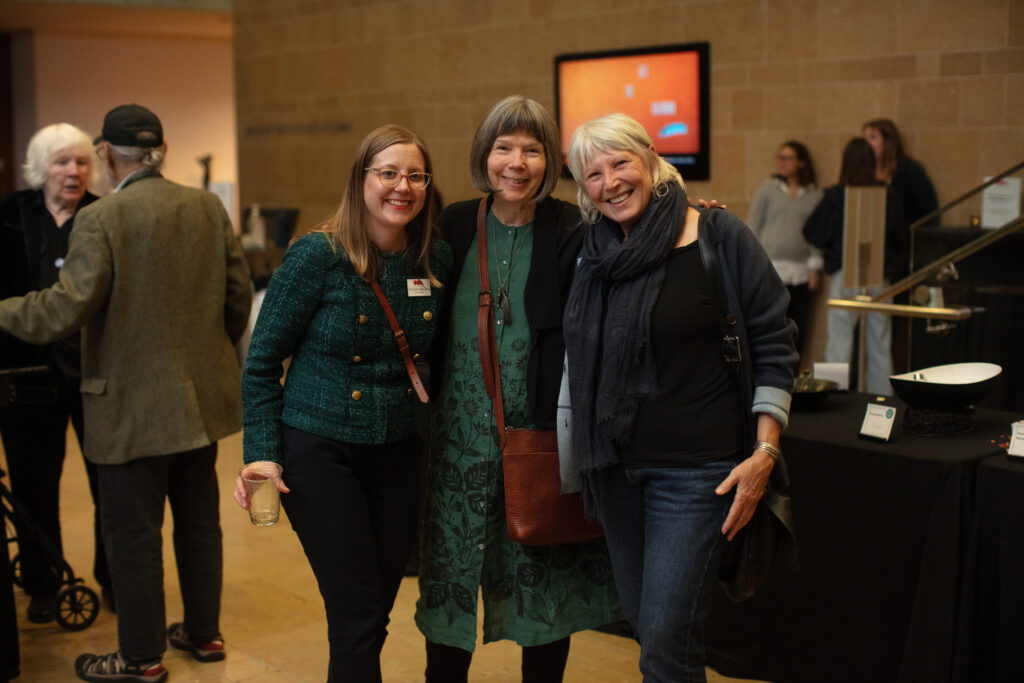
From left: Katherine Alcauskas, Chazen chief curator; artist Martha Glowacki; and Lillian Sizemore, mosaic artist and Marjorie Kreilick scholar.
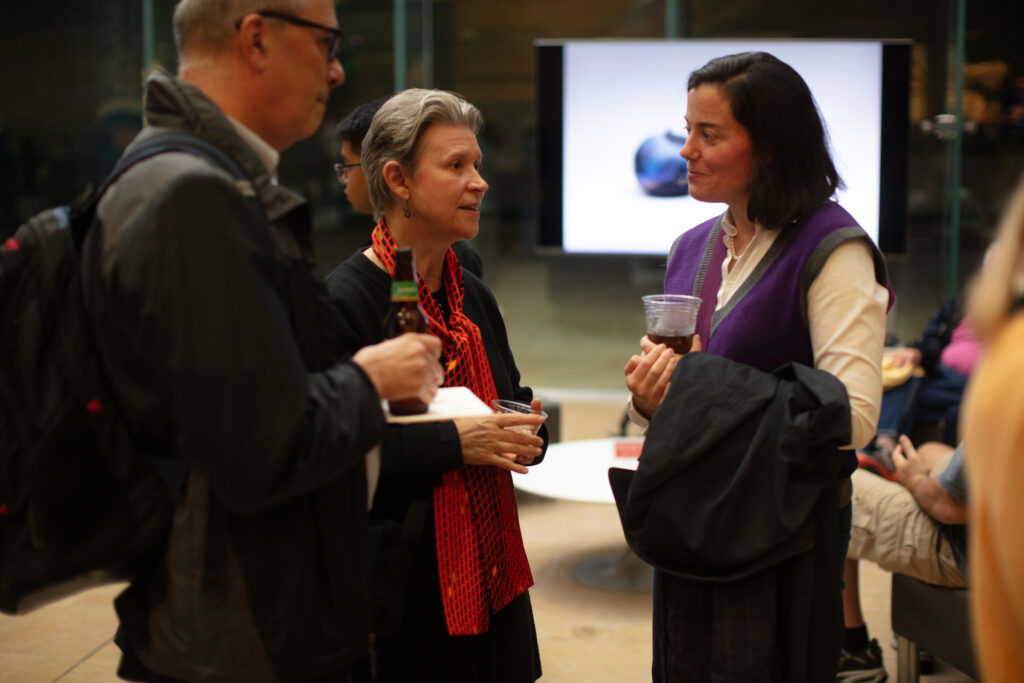
Former Chazen curator Maria Saffiotti Dale and Sarah Anne Carter, professor and executive director of the Center for Design and Material Culture (CDMC)
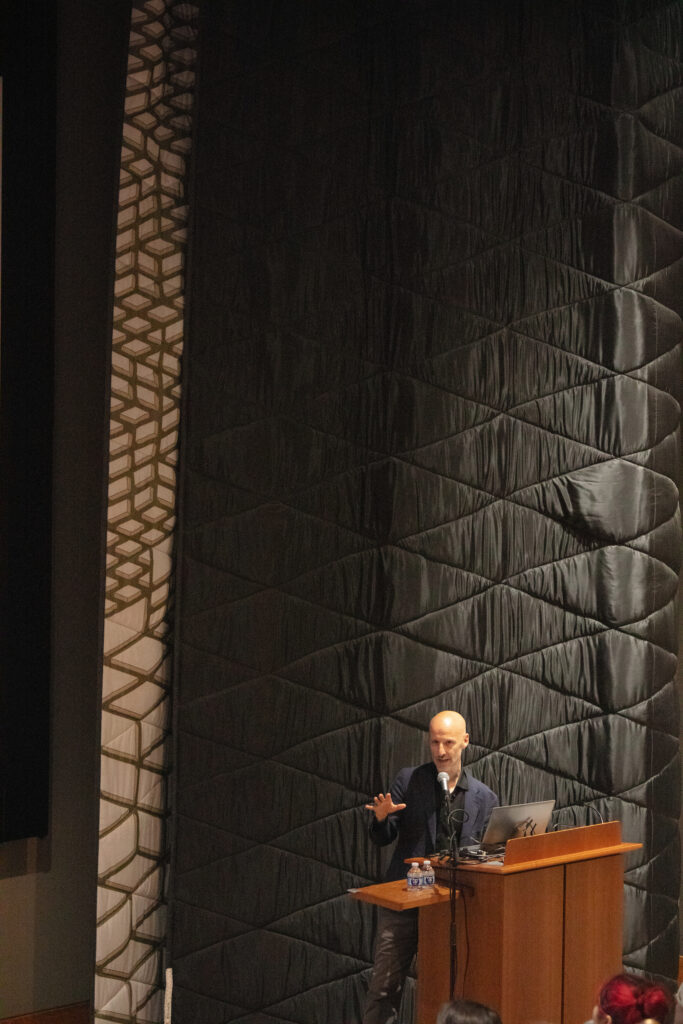
Glenn Adamson, co-curator of Toshiko Takaezu: Worlds Within presents a lecture on the artist. The lecture was sold out with all auditorium seats filled and overflow guests watching simulcasts in the Mead Witter lobby and the object study room.
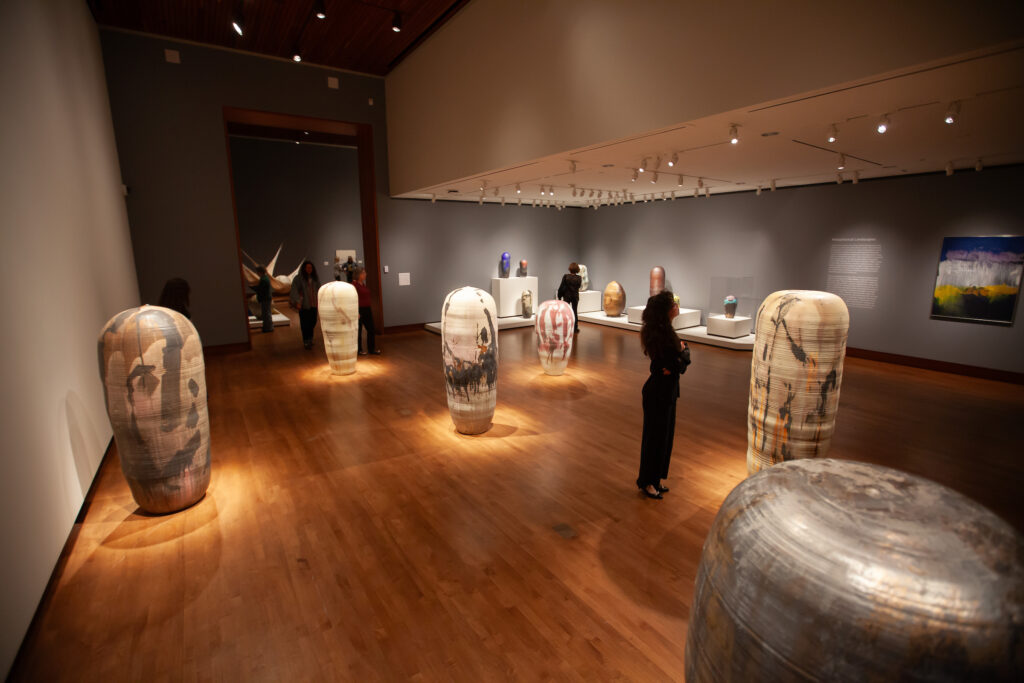
Works from Takaezu’s Star Series on view in the back Rowland gallery.
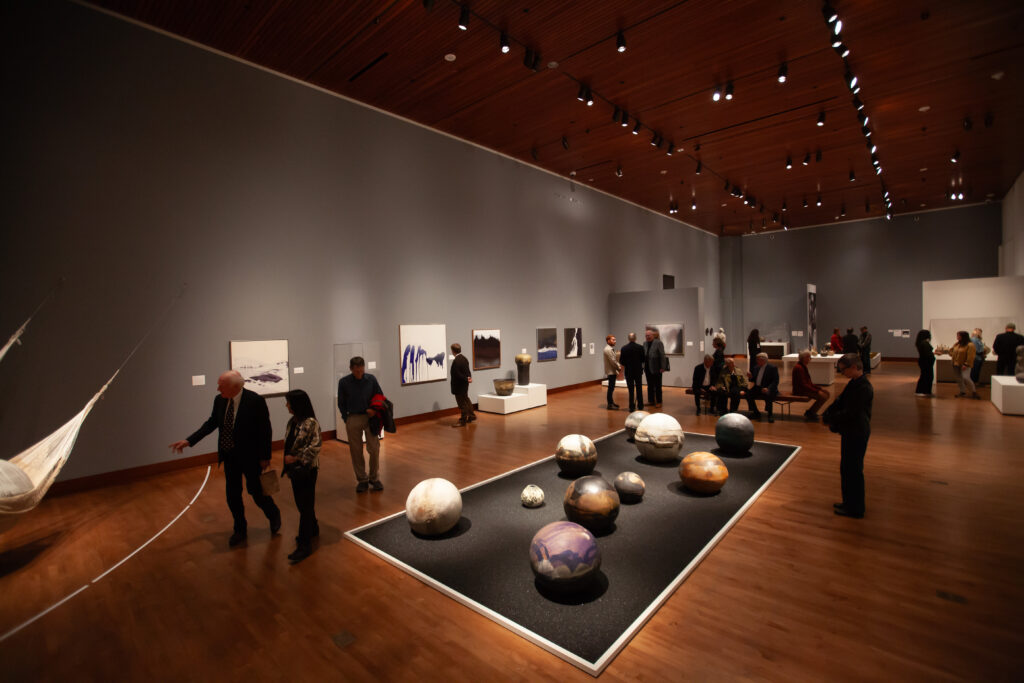
Museum visitors fill the Rowland galleries after the Glenn Adamson lecture.
Related Press
Programming & Financial Support
Toshiko Takaezu: Worlds Within is organized by The Isamu Noguchi Foundation and Garden Museum, with assistance from the Toshiko Takaezu Foundation and the Takaezu family. The exhibition and its national tour have been made possible through lead support from the Henry Luce Foundation and the Terra Foundation for American Art.
The exhibition is co-curated by Noguchi Museum curator Kate Wiener, independent curator Glenn Adamson, and sound artist and composer Leilehua Lanzilotti. The exhibition was conceived and developed with former Noguchi Museum Senior Curator Dakin Hart.
At the Chazen Museum of Art, the exhibition is supported by the Anonymous Fund.